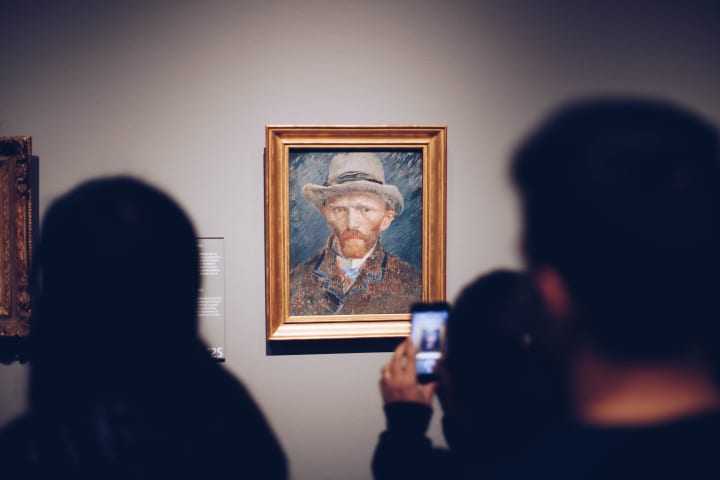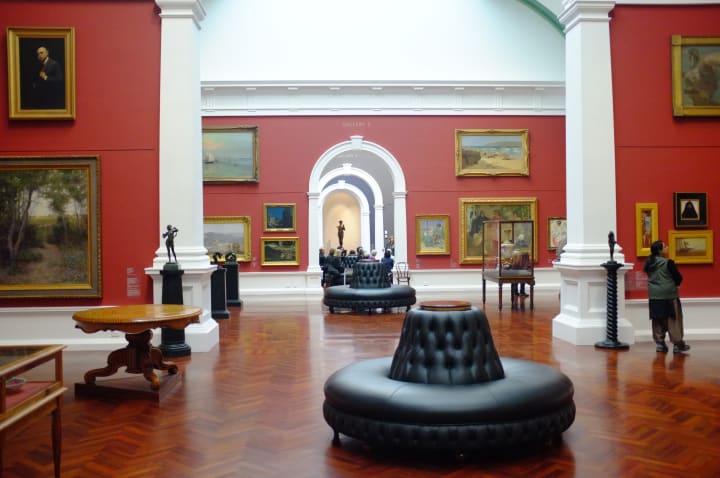How to Invest in Fine Art as Shares
If you're interesting in investing in fine paintings and sculptures, it's important to learn how to invest in fine art as shares as well as in the traditional manner.

Most of us don't think of buying art as long term investment options and strategies. More often than not, any paintings or sculptures that decorate our walls and rooms were purchased at a big box retailer like Target. These mass-produced pieces of art are inexpensive and will pretty much never increase in value.
There is, however, another side to the art world. Works by legendary artists such as Pablo Picasso, Andy Warhol, and Vincent Van Gogh sell for ridiculously high prices—often in the tens or even hundreds of millions of dollars. The trend of fine art selling for such high sums of money began in the 1980s with the sale of Van Gogh's Vase with Fifteen Sunflowers which, adjusting for inflation, sold for the equivalent of $73.8 million. At the time of this writing, the current record holder for most expensive painting is Salvator Mundi, believed to be a Leonardo da Vinci original, which sold for nearly half a billion dollars to the Abu Dhabi Department of Culture & Tourism in November 2017. As the contemporary art market continues to trend upward, it will most likely not be long until this record is broken yet again.
With the fine art market in such high demand, more people are buying art than ever before, and not just the supremely wealthy. Now is a great time to enter the world of art investment. It's very important to know what makes the fine art market tick before you get in too deep. In this article, I will not only discuss how to make your entrance into the contemporary art market, but also how to invest in fine art as shares rather than in the works of art themselves.
The Basics—Investing in Fine Art

Photo by Ståle Grut on Unsplash
Obviously, the vast majority of us are not prepared to drop several million dollars on a piece of art. While any investment requires a certain amount of startup capital, it is possible to enter the art world with a reasonable amount of money. Be wary, however, of some traps in the contemporary art market that can trick you into sacrificing long-term return on investment for short-term savings.
Let's say you're interested in a painting that is selling for $4,000. If this is your first foray into the fine art market, you may cringe at the price, but don't let yourself be persuaded into buying a giclée. "Giclée" is a needlessly fancy word that basically just refers to a high quality print of a painting. In other words, a giclée is a copy. The gallery owner may show you a selection of giclées in the $300-400 range with color and clarity that rival the $4,000 piece. No matter how high quality the giclée appears to be, however, a giclée is still just a copy, and it will never be as valuable as the original. In fact, with very few exceptions, a giclée will never appreciate in value by any significant percentage. If you want to save money on a print that will hang up in your house and never be resold, then buying a giclée is your call. If you want any chance of reselling the work of art for a higher price, however, then there is no substitute for the original piece.
In the contemporary art market, rarity is the name of the game. The more iterations or prints of a particular piece that are available, the less valuable it becomes. Historical significance also plays a big role, but that applies more to those works of art that sell for millions of dollars, like those by Georgia O'Keeffe and Mark Rothko. While I'm sure we'd all love to be buyers and sellers of that caliber, the big name artists are almost always exclusive to the incredibly wealthy. Thankfully, there is so much good art to be found in the world by artists who have yet to reach that level of notoriety, meaning you don't have to be a billionaire to participate in the fine art market.
The key to being a successful art investor is understanding what makes a particular painting valuable, and whether those traits are likely to translate to an appreciation in value 10 or 20 years down the line. This knowledge can really only be gained through practice. Before investing significant amounts of money (whatever "significant" means to you) in any work of art, you should familiarize yourself with as many art collections and galleries as you can. The sale records for many paintings can be accessed online, especially for paintings that were sold at an auction house. Try to figure out what makes a piece of art valuable, how often it is resold, and, importantly, who is buying art and where they are buying it from.
I should also emphasize that art investment is not for everyone. If you think a trip to the museum of Fine Arts in Boston sounds like a nightmare or don't understand fine art's value, you will be much better served by investing in other markets, like real estate. For those who enjoy art, however, investing in the fine art market is enjoyable, stimulating, and can be quite profitable. If you would rather learn how to invest in fine art as shares, however, that is also possible!
Investing in Fine Art as Shares

Photo by Akshay Chauhan on Unsplash
In just the past few years, a new method of art investment has emerged. For those of us who aren't financially or otherwise properly equipped to invest in art directly, here's how to invest in fine art as shares instead. Companies like the Hong Kong-based Takung Art Company (TKAT) now allow for investors to interact with today's fine art market without needing as deep of a knowledge of art history, and without needing as deep of pockets! Takung acts as an authentication and appraisal platform for buyers and sellers of fine art. Buying shares in a publicly traded company like Takung allows anyone to be involved in the fine art market through the stock market rather than through the art itself. It's a great way to combine your love of art with traditional stock market investing techniques.
About the Creator
Joseph D. N. Kendrick
Writer of words. Haver of cats. joeykendrick.com







Comments
There are no comments for this story
Be the first to respond and start the conversation.